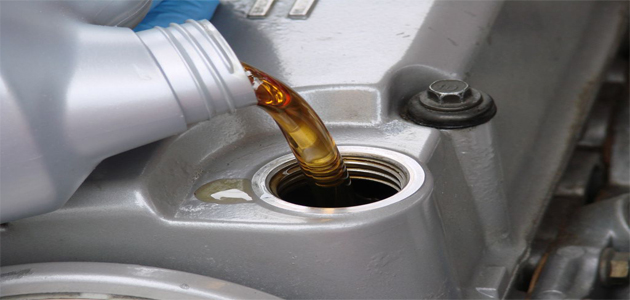
Oil is an essential element inreducing the friction of movingparts, along with heat removal and dissipation. However, engines driven mostly by legislation to meet exhaust gas emissions limits are now using exotic oil blends to reduce friction and excess heat too.
Quality standards
There are two quality standards for engine oils – American and European. Other systems are used for indicating the viscosity of the lubricant.
Quality standards are not always expressed in reference materials such as supplier catalogues or technical data. However, and this is the most important part, no longer are we in the halcyon days of one oil being suited to most of the vehicle parc; engine oil is now brand or engine specific!
You may have noticed that engine oil has a higher cost per litre than other oils, such as transmission or hydraulic oils. As a general rule, engine oil has to work in extreme conditions compared to other mechanical systems, thus it needs a better base stock and additive package. These extreme conditions could include, amongst others:
■ High operational temperature – This leads to reduced service life as a result of increased oxidation.
■ High levels of contamination – Including by-products of combustion and fuel along with mechanical wear debris. The atmosphere is even a source of contamination!
■ Moving mechanical parts (sliding and rolling) – Resulting in differing levels of lubrication. This results from varying loads and speeds.
Generally engine oil has a shorter service life than transmission or hydraulic oils, with up to 30% of an engine oil’s volume consisting of the additive package. In comparison, the additive package is typically up to 10% in other oils.
The American Petroleum Institute (API) pioneered the grading of lubricant quality standards in the early 20th Century for petrol engines, with the SA and CA grade in the mid 1900s for diesel engines.
Typical engines of the era are used as the test bed for the oils, therefore modern oils are suited for modern high speed, high powered, multi-valve engines. However, oils in the same classification do not necessarily have equal performance. They are classified as meeting – not exceeding – the requirements of particular quality classifications.
Modern oils are generally backwards compatible, whereas older qualities are not suited for more modern engines.
* Petrol or Spark Ignition engine oils have an ‘S’ rating = Service
* Diesel or Compression Ignition engine oils have a ‘C’ rating = Commercial
The aforementioned SA rating progressed to the SD classification in the early 1970s before the most recent classification, SN, was introduced for 2011 model year engines and lder. These service classifications are shown in Table 1.
Despite there being service classifications since the 1920s, Commercial (Compression Ignition) classifications weren’t published until the middle of the 20th Century. The most current API classification is CJ-4, which was published in 2010 for high-speed fourstroke diesel engines to meet 2010 model year on-highway vehicles and non-road exhaust emission standards along with previous model year diesel engines too. The classifications are shown in Table 2.
Don’t forget, these are American standards; European standards were developed by the Comité des Constructeurs du Marché Commun (CCMC) pioneered oil quality classification in Europe. CCMC classifications were prefixed with G for petrol engines and PD for diesel engines while heavy duty diesel oils were classified as D.
In 1996, the European Automobile Manufacturers’ Association (ACEA) superseded CCMC. G was replaced with A, PD was replaced with B and D with E prefixes respectively.
ACEA specifications
The evolution of the engine oil specifications developed by CCMC, and then by ACEA, has been vast with the ACEA C category developed for vehicles fitted with exhaust after treatment equipment.
As API classifications are frequently combined, such as SJ/CH-4; ACEA classifications are combined too, for example, A3/B4 for petrol and light duty diesel engines. They may be combined with exhaust aftertreatment classifications as well. Whereas API classifications are simply based on a letter further along the alphabet, for age; ACEA use numerals with four for petrol and light duty diesel engines (A1/B1, A3/B3, A3/B4 & A5/B5) four for engines with after treatment devices (C1, C2, C3, C4) and four heavy duty diesel engine classifications (E4, E6, E7, E9); which are not necessarily age related.
E classifications
All E classifications are suited to Euro I-Euro V emission requirements. Despite this, each classification has different suitability to engines fitted with various after treatment equipment, such as Exhaust Gas Recirculation (EGR), Selective Catalyst Reduction (SCR) systems and Diesel Particulate Filters.
As exhaust after treatment equipment has evolved through catalysts and Diesel Particulate Filters (DPF); you will be aware, that they can be poisoned or have their service life seriously shortened if the incorrect oil is used. C1 has the lowest SAPS (Sulphated Ash, Phosphorus and Sulphur) level of the C classification, though is not suited to all engines.
What does this all mean to us as users and service technicians?
The bottom line is that as oil purchasers or vendors, we must refer to the vehicle manuals or similar reference materials to ensure that the correct oil specification is used.









